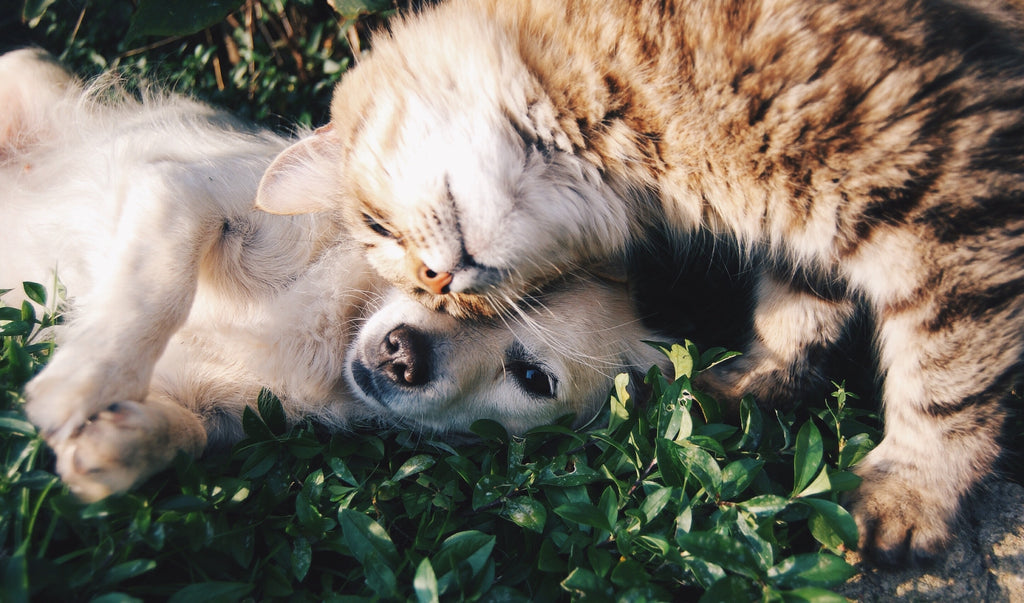Before introducing cats to your dog, it’s important to consider how well your dog will respond. Unfortunately, some dogs just weren’t meant to have feline friends. However, if you think your dog can handle having a cat in your home, think about what kind of personality would best mesh with them. For example, if your dog has a very energetic personality, they would be best with a calm, confident cat that won’t run from them. But, a shy cat would be a terrible match for an energetic dog; the cat would be in a constant state of fear.
Therefore, these little nuances make introducing cats with the right personalities to our dogs extremely important; you don’t want a disaster to ensue when they first meet each other. Even if you do find the perfect match, it’s still imperative to properly introduce cats and dogs rather than just letting them figure it out.
In this article, you will be provided with step-by-step way of making sure introducing cats to your home goes well; basically, a how to guide on how to introduce a new cat to your dog.
Step 1: Choose the Right Location
First off, the shelter isn’t the right location for your dog to meet a prospective cat. It will make all the cats in the shelter tense up and create an atmosphere filled with stress. Moreover, it won’t tell you anything about how your dog will react at home; dogs tend to be more excitable in unfamiliar environments. Therefore, ask the adoption coordinator to set you up in a controlled area where cats and dogs are allowed to meet; make sure to ask them for a calm and confident cat that won’t be afraid to engage with your dog. If this isn’t an option, have a friend bring over their cat who’s been exposed to dogs before; it will get them used to the idea of cats before meeting your new cat. Basically, you want a place where neither the dog nor the cat has allegiance to; therefore, your home should be one of your last choices. If you are forced to do a home introduction, keep it brief and keep the dog on a leash; this will allow you to control your dog’s actions toward the cat. Then, immediately put them in separate rooms.

Step 2: Keep Them Separated
Now, that the two animals have met, you still don’t want to go full throttle; you want to slowly build up their comfort levels with each other over a few days. It’s a good idea to switch which animal is allowed to roam freely over the first few days. This will allow each animal to get used to each other’s scent. Another trick to getting cats and dogs used to each other’s scent is by feeding them both on opposite sides of the same closed door for a week; however, make sure the door isn’t see through. This helps cats and dogs associate the scent of each other with a pleasant experience. Also, it would be a good idea to invest in some gates to separate the animals from each other, especially, with dogs that can’t handle being alone.
Now, if you do leave your home, you need to make sure there’s no way your dog and cat can have an interaction; either crate your dog or put the cat in a separate locked room.
Furthermore, after a couple of days, you should get your cat used to being in a crate. Therefore, if they do feel overwhelmed by the dog’s presence, they would have somewhere to flee.
Step 3: Getting the Cat Used to a Crate
I know, introducing cats to crates seems like a weird concept, however, it can be a great training tool for getting cats and dogs used to each other, It allows for the cat to have a safe space to stay for the duration it takes for both animals to feel comfortable. It’s really just a three-step process:
- First, lock your dog away. After all, you don’t want them interfering with the training.
- Second, lure your cat into the crate with some food or treats.
- Third, shut the crate door and wait five minutes before opening the door.
However, if your cat becomes nervous about being in a closed crate, repeat these steps 2 or 3 times a day. If your cat won’t go in, put them in the crate. Eventually, they will accept that this is for their own good.
If you’re confident the cat’s comfortable in the crate and notice your dog is starting to be calm around the cat, it’s time to start introducing them more frequently with the help of a leash
Step 4: Leashed Meetings
Part 1: Cat in Crate and Dog on a Leash:
After they get comfortable with each other, put your cat in the crate inside the crate room. Then, bring the dog into the room on a leash. You can get top quality dog training leash in our store. The leash will allow you to supervise the interactions and making sure the dog doesn’t get too excited or obsessive.
Next, keep your dog calm for a five-minute session; tell them to do some of their commands such as sit, or paw. If your dog becomes hyper-focused on the cat in the crate, leave the room and try again after a few minutes. Remember, the worst that can happen is your dog lunges at the crate and you pull back on the leash; the cat may act aggressively towards the dog as well.
Then, with each five-minute session, slowly start moving them towards each other. This should be done gradually, don’t just immediately take your dog up to the crate; it will ruin the progress you made. This should take days or weeks before your dog reaches the crate depending on the success of the interactions.
If your dog can smell the crate without a reaction from the cat, increase the session length. Then, if they can survive thirty minutes in the same room together, it’s time to move onto something more complicated; letting your cat loose from the crate in the same room as with your dog on a leash.
Part 2: Cat on the Loose and Dog on a Leash
First, put your dog on the far side of the room still on a leash in a sitting or laying down position. Then, have someone else open the crate door; you cat might stay in the crate, therefore, tempt her out with some food or treats. In this case, keep your dog’s attention; after all, we don’t want to scare the cat even more with your dog lunge at the cat treats.
Second, keep your dog in sitting position while the cat roams around. If he doesn’t listen to you, you need to revert back to step 4: part 1. It’s important to never let your dog chase your cat; it’s going to end very badly.
If your dog successful stayed unaggressive towards the cat over a couple of these sessions, gradually increase their time together over the next couple weeks; however, keep the dog on a leash during this time.
Finally, if you feel they’re relaxed around each other after a number of leashed meetings, it’s time to let them be unsupervised.

Step 5: Let them Both Roam
Full discourse, this will be the most stressful step. Honestly, it shouldn’t be taken lightly. It should only be tried after the cat and dog have spent a significant amount of time with each other; a month is a good benchmark.
Over the first few weeks, you’ll always be wondering if something bad is going to happen when you’re not supervising. However, if you plan to keep both animals, you’ll need to trust them at some point. Therefore, reaching this step’s a good thing because it means you have full confidence in both your dog and your new cat.
Read more about " Best Dog Training Methods" here.













